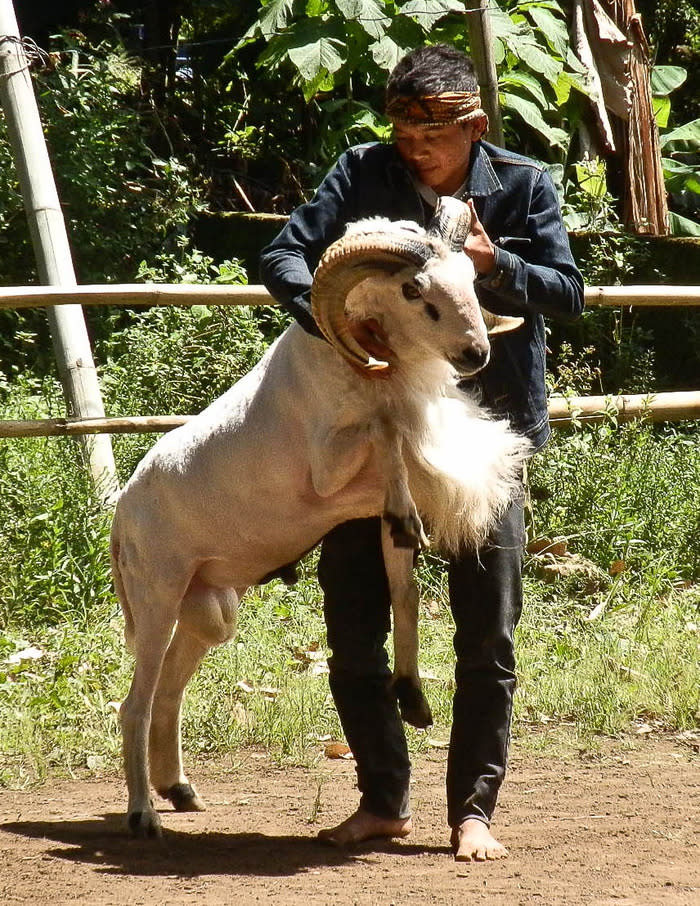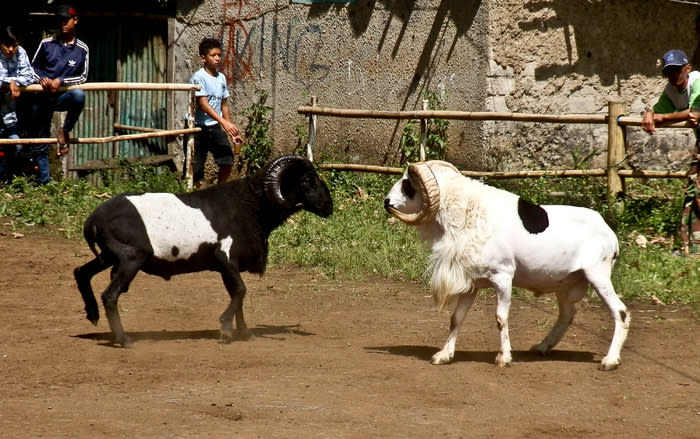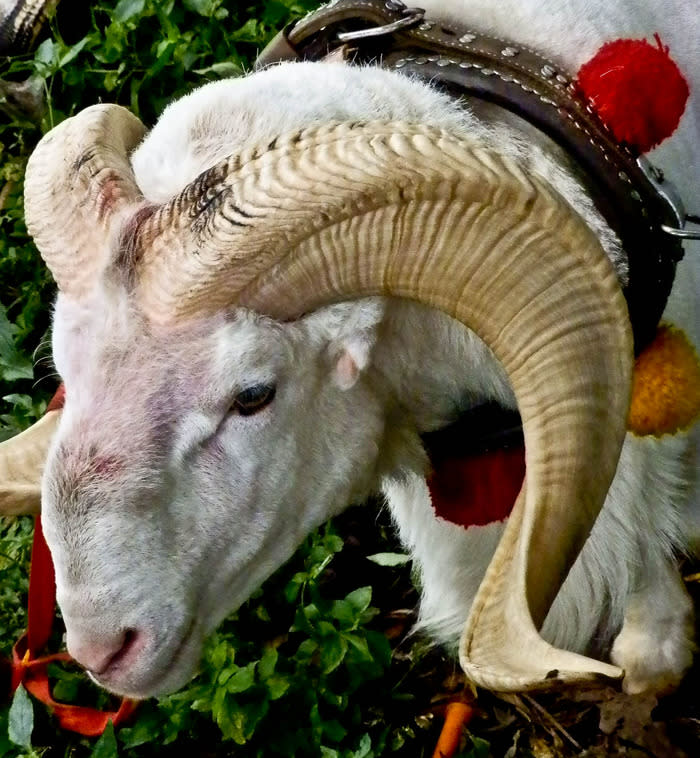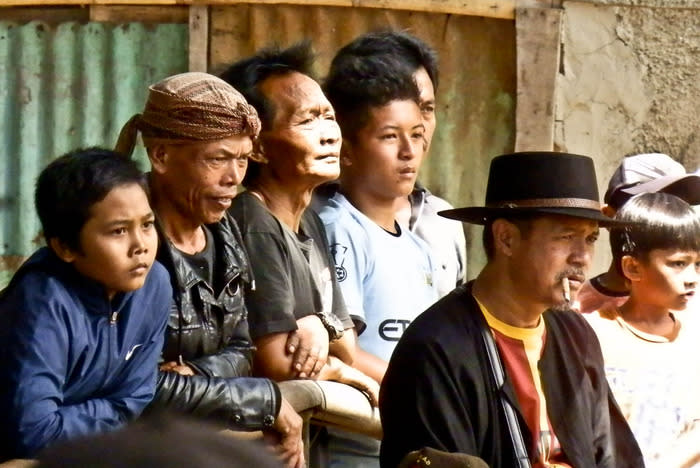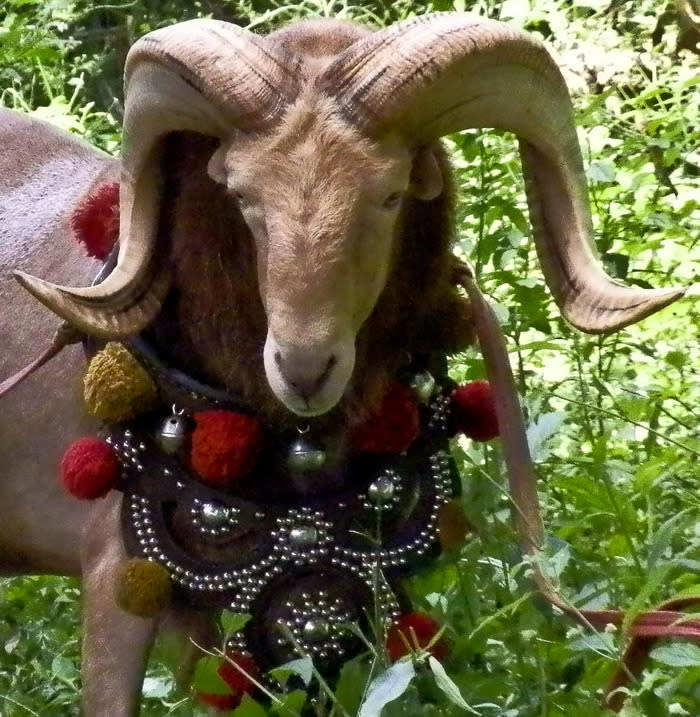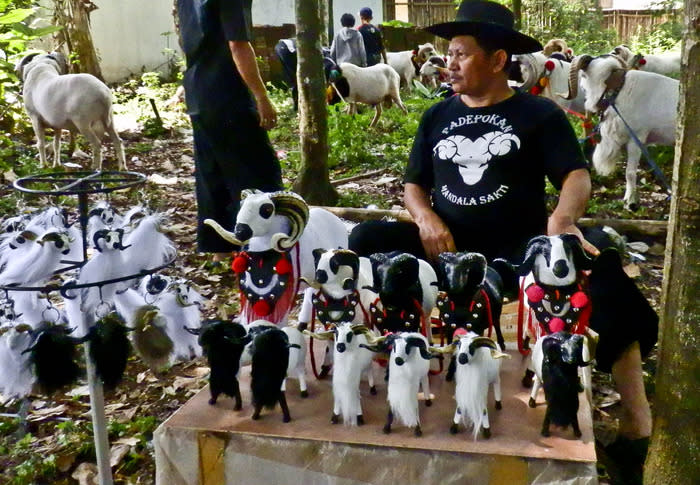Witnessing West Java's ‘adu domba’
Adu domba (ram fighting) is common in West Java, especially around Garut and Bandung. Villagers spend leisurely Sunday mornings watching these bouts.
For a tourist, finding the place hosting an adu domba is just as much a part of the adventure.
Relying on my sources, I head to Ciwaruga hamlet near Bandung, but the villagers there, excited to see a foreigner, tell me that their village hosted the event the week before and will host it again the week after.
One of the villagers makes a phone call: “My friend is not sure, but you can try your luck at Siliwangi.”
I race to Siliwangi, but it is the same story. However, this time a person who is called on the phone is absolutely certain that the bouts are taking place at Cilimus hamlet.
As soon as I turn away from the concrete expanse of Bandung to the narrow lane of Jl. Cimilus, I can hear the music -- a tell-tale sign that an adu domba is happening.
Soon I can figure out the arena, lined with people watching the contests. Just before this human wall, about 100 rams wait patiently. They have all come dressed up for this occasion, wearing elaborate necklaces. Some have their team names written on the necklaces.
They treat me with utter indifference as I walk past them toward the arena.
Two rams have just been brought in, evenly matched by weight, as is the rule for adu domba.
As soon as they see their opponent, they can’t control themselves. They are raring to go at each other; a demonic force has just entered these otherwise calm personalities. Their owners struggle to take off their accessories. The rams are throwing their legs all over.
The jovial looking referee, a toothless old man, blows a whistle. Once let loose, the rams immediately head butt one another.
“One,” counts the commentator.
The music begins; a slow hypnotic rhythm of horns and drums. The sound of a broken pot; “Two,” counts the commentator.
Almost dancing, the rams recoil and move apart in a straight line, their steps synchronized.
Then, as if pulled in by an elastic string that ties them together, they run at each other, fly in the air, and thud!; another broken pot.
“Three, that must have hurt,” says the commentator.
After count four, the rams start rubbing against each other like boxers do as a defense mechanism. But the referee blows the whistle and the owners come to pull the rams apart.
Soon, they come running at each other again for count five. One of the owners begins shouting at his ram like an angry soccer coach, telling him to aim higher.
“Six,” the crowd begins clapping.
It is a good fight. It goes on until count 10.
The owners again struggle to pull the rams apart, put back on their necklaces and drag them away from the arena. Calm instantly returns to the rams.
I notice the crowd has built up since I arrived to about 100 villagers. Many men are dressed like cowboys. There are people of all ages. Some mothers have brought along their toddlers. It is like a small fair. There is a pushcart for chendol drinks. Two vendors have come in with their bakso (meatball soup) ensemble. A tofu seller squats in the shade. Business seems to be brisk for everyone.
I meet Pak Agus, who has set up a small stall selling trinkets based on the domba theme – key chains and stuffed domba toys. He is even wearing a T-shirt with ram horns: “I move from village to village selling these. They are very popular with the kids.”
He looks around: “You can easily spot who is a ram owner here. They look so serious and never smile. Look, here comes one.”
A man dressed like a cowboy approaches Pak Agus and buys a domba key chain for his son. His name is Pak Widay.
Pak Widay tells me, “Well, one of my rams won. That one lost though.”
He was indeed quite serious. “I live around here but go every Sunday to whichever village hosts a contest. I own seven rams, Team Sinar Mas [Golden Rays].”
He continues: “They are all between three to four years old. Of course, all are male. They may look calm, but if you untie them and leave them on their own, they will fight all day.”
Pak Widay tells me that rams can cost from US$500 up to $10,000 for champions. As for prizes, if it is an ordinary contest, the winner gets Rp 10,000. If it is a grand contest, then the prize is usually a motorcycle.
Ram fighting lasts for three hours and ends by noon.
After closure, the referee, Pak Agus, finally gets time to sit down and rest. Some of the rams have slightly swollen foreheads. No blood is spilled in this sport.
“Maybe they are a little dizzy now. But they will be fine by tomorrow,” says Pak Agus with a toothy smile.
The owners and their families scramble to lift the rams like babies and load them onto their pickups; a series of clean-and-jerk maneuvers. Bakso sellers approach everyone to make one last sales pitch. Pak Agung has sold most of his domba trinkets. The villagers stroll leisurely back to their homes. A few young boys enter the arena and butt each other with their heads, mocking the rams.
“It was a good day, see you next time,” says the commentator. But someone had already turned off his microphone.
Read also:


